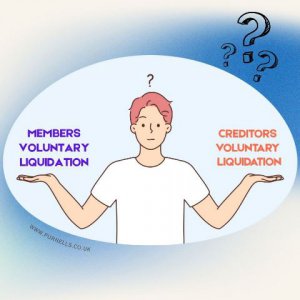Winding Up Petitions: Everything You Need to Know
Winding Up Petitions: A Comprehensive Guide
What is a Winding Up Petition or Winding Up Application?
A winding up petition is a legal document filed in court to place a company into Compulsory Liquidation. It is typically used by creditors who are owed money by the company. However the directors and shareholders can also issue a winding up petition. If successful, the petition leads to the appointment of a liquidator to sell off the company’s assets and settle outstanding debts.
Reasons for Filing a Winding Up Petition
Th usual reasons for issuing a petition are as follows:
- Insolvency: When a company is unable to pay its debts as they fall due.
- Creditor Pressure: Creditors may file a petition if a company has failed to respond to demands for payment.
- Directors and Shareholders Dispute: If the directors and/or shareholders are in dispute and there is deadlock, a Winding Up Order may be the only way to bring the life of the company to an end.
- Failure to File Accounts: Companies that neglect to file required annual accounts may face winding up petitions.
When can a Winding Up Petition be issued?
A petition can be issued in the following circumstances:
- Resolution: When the shareholders pass a special resolution to wind up the company by way of a Court Order.
- Trading: The company does not commence to trade within a year of incorporation.
- Insolvency: The company is unable to pay its debts.
Definition of Unable to Pay its Debts
Section 123 of The Insolvency Act 1986 states that a company is unable to pay its debts:
- If a creditor, who is owed more than £750, issues a Statutory Demand against the company, which is unsatisified (unpaid) after twenty one days.
- If a judgment is returned unsatifised, or is not paid in full.
- If the Court is satisified that the company cannot pay its debts as and when they fall due.
- If the Court is satisified that the value of the company's assets are less than its liabilities.
The Winding Up Petition Process
The standard process for the issuing of a petition is as follows:
- Filing the Petition: The creditor submits the petition to the court, along with supporting documentation.
- Court Hearing: A hearing date is set where both the creditor and company can present their case. The court will then assess whether the company is insolvent and whether a Winding Up Order should be made. A hearing date can take anywhere from 2 - 3 months from the date the petition is issued.
- Service: The creditor, or applicant, will serve a copy of the petition on the company, typically at its registered office.
- Advertisement: The petition will be advertised in the London Gazette. This is important as it is likely that the company's bank account will be frozen by its bankers once they receive notice of the petition.
- Judgment: If the court finds in favour of the creditor, it will issue a Winding Up Order. The company will then be deemed to be in Compulsory Liquidation.
- Appointment of a Liquidator: The Official Receiver will automatically be appointed as the Liquidator in the first instance, but a licensed insolvency practitioner may be appointed by the creditors to manage the winding up process.
- Distribution of Assets: The liquidator will sell the company’s assets and distribute the proceeds to creditors according to their priority.
Implications of a Winding Up Petition
The main implications of a issuing of a Winding Up Petition and the making of a Winding Up Order are as follows:
- Loss of Control: The company loses control over its assets, which are managed by the liquidator.
- Bank Account: Once a petition is advertised it is likely that the bank will freeze the company's bank account.
- Credit Rating Impact: A winding up order negatively affects the company’s credit rating.
- Legal Consequences: Directors may face legal scrutiny and potential personal liability if wrongful trading is identified.
- Challenge to Payments: Under Section 127 of The Insolvency Act 1986 any payments, or transfers of assets, between the date of the petition and the date of the winding up order are void and can be overturned, unless the Court makes a Validation Order.
The Hearing of the Winding up Petition
Approximately two to three months after the issue of the winding up petition the Court will "hear" the petition. What this means is that the Court will listen to representations made by the applicant creditor and defence arguments put forward by the company subject to the petition.
If the company wished to oppose the making of a Winding Up Order, it will need to engage the services of a solicitor and perhaps even a barrister to put forward the relevant arguments to either dispute the petitioning debt, or oppose the making of a Winding Up Order.
It is also sometimes possible to agree an adjournment of the hearing for 4 - 8 weeks. This is typically to allow the company and creditor time to negotiate the payment of the petitioning debt, or if the company needs more time to settle the debt in full.
A good example of this is where the sale of a substantial asset was in progress and was due to complete in several weeks, and the sale proceeds would be sufficient to settle the debt it full. The Court in these circumstances would more than likely grant an adjournment to allow that sale to take place and for the petitioning creditor to be paid in full.
Alternatives to Winding Up Petition
Winding Up Petitions and Orders can quite often be avoided by using alternative options such as:
- Negotiating Payment Plans: Discussing payment options with creditors can prevent escalation to a petition.
- Administration: Companies may seek an administration order to restructure and save the business.
- Company Voluntary Arrangement (CVA): This allows a company to reach an agreement with creditors on debt repayment over time.
- Creditors Voluntary Liquidation (CVL): If the petitioning costs are paid, most petitioning creditors are willing to allow the company to place itseld into Creditors Voluntary Liquidation instead.
Frequently Asked Questions (FAQs)
What happens if I receive a winding up petition?
It is crucial to seek legal and insolvency advice immediately, as failing to respond can lead to automatic liquidation.
Can I oppose a winding up petition?
Yes, if you believe the petition is unjustified, you can contest it during the court hearing.
How long does the winding up process take?
The duration can vary, but typically it take two to three months from the date the Winding Up Petition is issued, to the date of the Winding Up Order.
Will the company bank account be frozen?
Yes, once the petition is advertised, the bank will freeze the company's accounts.
How much does it cost to issue a Winding Up Petition?
This will vary from solicitor to solicitor, but once court fees and the deposit is taken into account the typical cost will be £5,500 to £6,000.
If I receive a Winding Up Petition What Should I Do?
If your company has received a winding up petition you should take immediate advice from a Licensed Insolvency Practitioner.
If you would like a free meeting to discuss Winding Up Petitions please ring us on 01326 340 579 or email help@purnells.co.uk and one of our Licensed Insolvency Practitioners will be happy to arrange a free meeting with you.
Would you like us to give you a call?
Fill in the form and we'll give you a call as soon as we can to discuss your needs in a free initial consultation with a Licensed Insolvency Practitioner. Alternatively give us a call on 01326 340579 if there is an urgency to your needs.
The information provided will be used solely to contact you and any information you provide will be held in accordance with our firm's privacy policy, and not used for marketing purposes.






